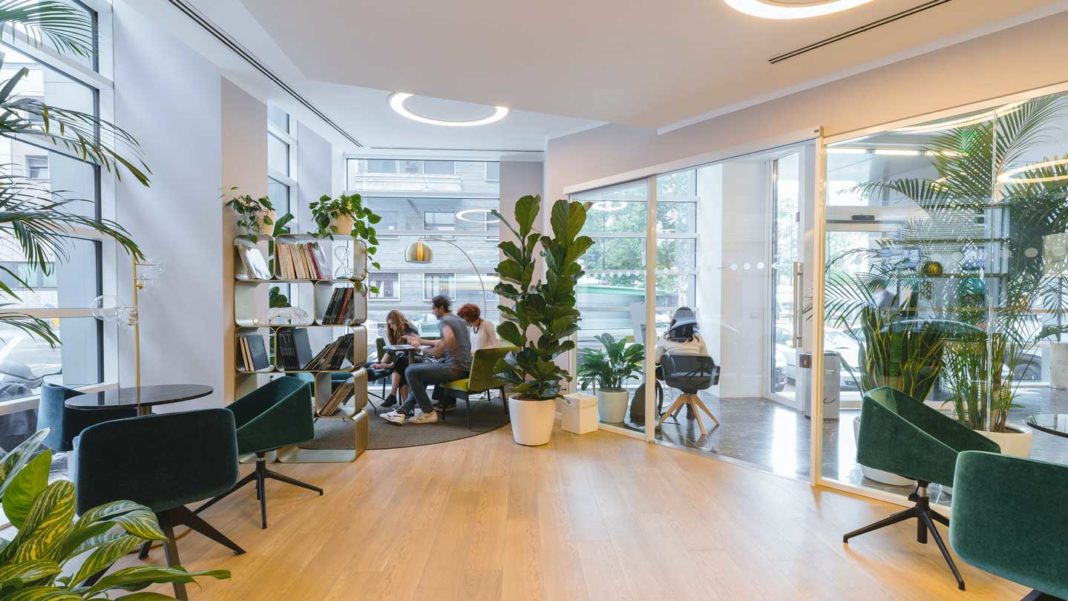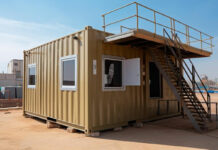Sustainable practices have emerged as a top priority for companies around the world. Portable storage offices and worksite office trailer are just one example of how companies can lessen their negative effects on the environment through the use of sustainable practices.
Using environmentally favorable options for mobile storage spaces is one way for businesses to show commitment to sustainability and cut down on their carbon impact.
The use of green energy sources, energy-efficient architecture, eco-friendly gardening, and trash reduction and recycling all play important roles in creating a more sustainable future.
In this article, we’ll discuss how eco-friendly companies can benefit from movable storage spaces and other green practices.
Sustainable Building Materials
The environmental friendliness of mobile storage buildings is heavily influenced by the materials used to construct them. Bamboo, repurposed steel, and salvaged timber are just a few examples of carbon-neutral building components. Compared to conventional construction materials, these have many advantages, including being recyclable, requiring less energy to create, and releasing fewer carbon emissions.
The rapid growth and regenerative properties of bamboo make it an excellent building material for temporary workplaces that require minimal infrastructure. In addition to being sturdy and long-lasting, this material is also surprisingly light. Since it is often produced from waste metal that would otherwise wind up in dumps, recycled steel is also a great environmentally responsible choice.
An additional eco-friendly substance that works well for temporary workspaces is reclaimed timber. It has a distinct personality because it is salvaged from historic houses, bridges, and other structures, while also decreasing the need for new forest growth.
Energy-Efficient Design
Offices for mobile storage can be built with eco-friendly components that minimize energy use. The cost of running a mobile storage facility can be lowered considerably by installing energy-efficient lighting, soundproofing, and airflow. Insulation helps keep the workplace toasty in the winter and chilly in the summer, decreasing the need for heating and conditioning systems.
When designing mobile storage facilities that are also economical to operate, ventilation must be given careful consideration. If you want to keep your home cool without breaking the bank, make sure you have adequate airflow. Energy costs and ecological footprints can be decreased by using a well-ventilated movable storage office instead of a permanent building.
Renewing Power Generation
Mobile storage facilities can be powered by sustainable energy sources in addition to energy-efficient construction. Businesses concerned with environmental impact can choose from a variety of sustainable energy solutions, including solar cells, wind generators, and geothermal heating and conditioning. Because of their low upkeep and ease of installation, solar cells are increasingly being used in movable storage buildings. By harnessing the force of the solar, they create electricity that can be used indefinitely.
Businesses interested in using green energy sources also have the choice of installing wind generators. They harness the power of the breeze to create electricity, making them an environmentally friendly option for powering mobile storage facilities.
Because they use the constant temperature of the ground to provide heating and cooling, geothermal heating and cooling systems are also a great choice because they cut down on the amount of energy required to keep a building at a reasonable temperature.
Eco-Friendly Landscaping
The viability of mobile storage facilities can also be improved by surrounding them with environmentally friendly vegetation. Green rooftops, rain gardens, and other environmentally friendly planting features can be added to the locations of mobile offices storing company assets. Vegetation grows atop green rooftops to create a buffer zone that lessens the structure’s environmental footprint. They insulate the building, which means less energy is needed for heating and ventilation.
Portable storage facility locations can also benefit from the addition of rain gardens, which are an attractive and functional addition to any environmentally conscious gardening plan. To lessen the amount of polluted storm water that makes its way into drinking water systems, they’re made to absorb and purify precipitation. Also, by giving vegetation and creatures a place to call home, they serve to increase variety.
Waste Reduction and Recycling
The longevity of mobile storage buildings can also be improved through trash minimization and recycling initiatives. The amount of trash sent to dumps can be decreased by designing mobile storage buildings with recycling and decomposition facilities built right in.
Paperless workplaces, recyclable coffee mugs, and a ban on single-use plastics are just a few examples of how companies can minimize their environmental impact and save money.
Conclusion
Companies concerned with their environmental impact may find that temporary storing containers and worksite office trailer provide the ideal green answer. The environmental effect of companies can be greatly diminished through the use of eco-friendly construction materials, efficient energy design, green energy sources, environmentally friendly gardening, and trash reduction and disposal programs.
Businesses can show they care about the environment and the future by implementing eco-friendly practices and policies. Using environmentally favorable options for mobile storage spaces is one way for businesses to show commitment to sustainability and cut down on their carbon impact. The use of green energy sources, energy-efficient architecture, eco-friendly gardening, and trash reduction and recycling all play important roles in creating a more sustainable future.










